Filter results by
System Type
Product Type
Installation Type
Lifeline Type
Lifeline Length
French Creek Production provides confined space systems to assist you in your industrial safety needs. Choose from the following systems such as a tripod, davit, quadpod, descent, raise and lower system, and rescue systems.
-
-
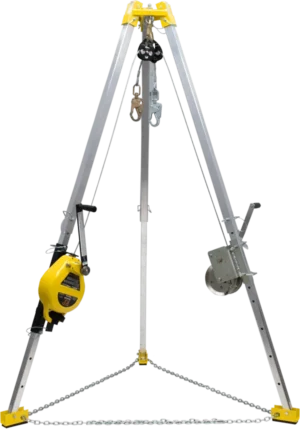
S50G-M7 Confined Space Tripod System
Tripod Confined Space System
-
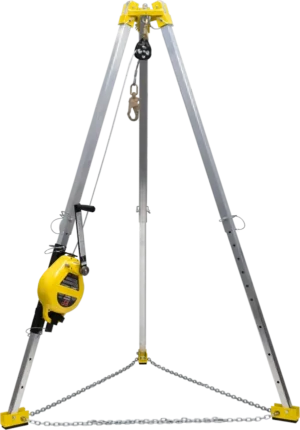
S50G-7 Confined Space Tripod System
Tripod Confined Space System
-

PD5 Davit System Core Mount Sleeve Base
Core-mount davit sleeve for 4” (0.10m) diameter core …
-
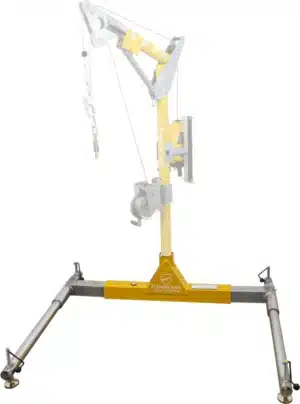
PD2 Davit System Portable Base
3-piece portable davit system designed for confined …
-
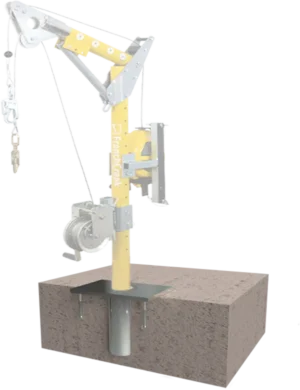
PD6 Floor Mount Cast in Place Davit Base
Floor mount cast-in-place base
-
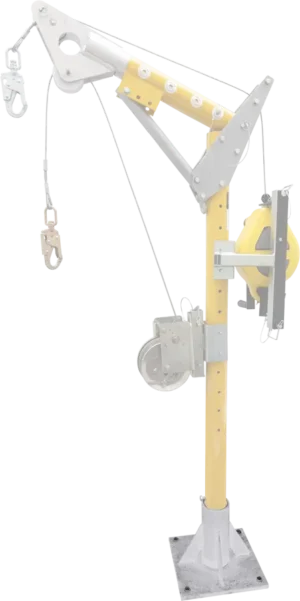
PD7 Floor Mount Sleeve Davit Base
Floor Mount Sleeve Davit Bolt On
-
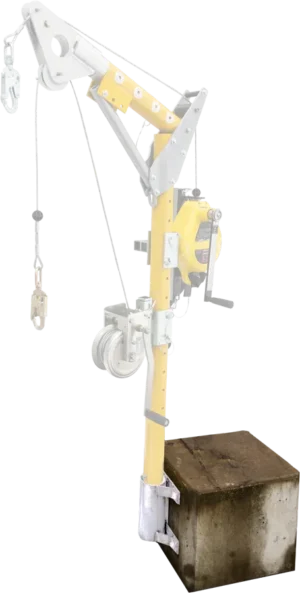
PD8 Wall Mount Sleeve Davit Base
Wall mount sleeve davit base bolt-on
-
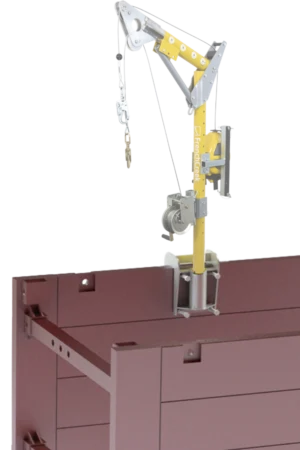
PD9 Davit System Barrell / Trench Box Base
Trench Box Davit Base System
-
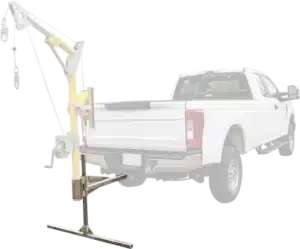
PD10 Davit System Hitch Mount System
Truck hitch mount davit base
-
Confined Space Entry Systems Information & FAQs
What is a Confined Space Entry System?
A confined space entry system provides essential tools and components for safely accessing and working in confined areas, such as tanks, manholes, and sewers, where entry and exit are restricted. These systems include rescue and retrieval functions, ensuring workers’ safety in potentially hazardous environments. By minimizing risks, they play a crucial role in maintaining operational safety standards in various industries.
Types of Confined Space Entry Systems
- Tripod Systems: Lightweight and portable, tripod systems are commonly used in confined space access and rescue. These systems offer quick setup and are ideal for temporary use in various applications, including industrial maintenance and construction.
- Davit Systems: Davit systems provide a secure, adjustable anchorage that allows for smooth entry and retrieval in confined spaces. They are often used when increased mobility is required and can accommodate both permanent and temporary setups.
- Quad Pod Systems: Quad pod systems are similar to tripods but offer greater stability due to four legs instead of three. This feature distributes weight more evenly, making it ideal for areas where additional support is necessary.
- Descent Systems: Descent systems allow for controlled, safe lowering into confined spaces. They are crucial for operations where vertical entry is required, such as accessing underground facilities, tanks, or silos.
- Raise and Lower Systems: These systems provide both entry and retrieval capabilities, allowing for efficient raising and lowering of personnel and equipment in confined spaces. They are essential in environments where frequent access is needed.
- Rescue Systems: Designed for emergency situations, rescue systems enable quick extraction of individuals from confined spaces. They are vital for ensuring worker safety in the event of an incident, offering rapid response capabilities.
Key Features
- Portability: Confined space entry systems are lightweight and designed for easy transportation. This ensures that they can be quickly moved between job sites or areas where confined space work is required, improving efficiency and safety.
- High-Strength Construction: Built to withstand harsh industrial conditions, confined space systems are constructed from durable materials. This guarantees that they can handle the stresses of frequent use in challenging environments, such as construction sites and industrial plants.
- Adjustable Arms and Height: Many systems feature adjustable arms or heights, allowing for better customization to suit the specific space and task at hand. This flexibility improves both safety and ease of use.
- Corrosion-Resistant Materials: Confined space entry systems are often made from corrosion-resistant materials to ensure longevity, particularly in harsh or corrosive environments like water treatment facilities or industrial plants.
- Quick Setup: These systems are designed for fast and efficient setup, which is essential for emergency rescue operations or in situations where quick access to confined spaces is required. Fast setup reduces downtime and enhances safety.
Applications of Confined Space Entry Systems
- Industrial Maintenance: Confined space entry systems are frequently used to provide safe access for workers performing maintenance inside tanks, silos, and other enclosed areas. Their versatility allows them to be deployed in various industrial sectors.
- Emergency Rescue: In rescue operations, confined space entry systems are essential for quickly retrieving individuals from hazardous environments. These systems are designed to be deployed rapidly, ensuring a swift and safe response.
- Utility Work: Utility sectors rely on confined space systems for accessing manholes, vaults, and tunnels. These systems help workers safely enter and exit confined spaces to perform inspections, repairs, or maintenance work.
- Construction: During construction projects, workers often need to access shafts, tunnels, and other confined areas. Entry systems provide the safety required for working in these environments, ensuring that construction tasks can be carried out efficiently.
- Water Treatment Facilities: Confined spaces are common in water treatment plants, and entry systems allow for safe inspection, cleaning, and maintenance of confined areas such as tanks and reservoirs.
Maintenance and Inspection
Regular maintenance and thorough inspections are crucial to the functionality and safety of confined space entry systems. Equipment should be checked for signs of wear, corrosion, or damage before each use. Following the manufacturer’s guidelines for maintenance ensures longevity and reliability of the systems. Periodic replacement of worn parts is also important for maintaining compliance and safety standards.
Compliance with Safety Standards
Confined space entry systems must comply with safety regulations such as those set by OSHA and ANSI. These standards ensure that the equipment meets rigorous safety requirements to protect workers from fall hazards and other risks associated with confined space entry. Always verify that the systems are certified and meet regulatory guidelines before use.